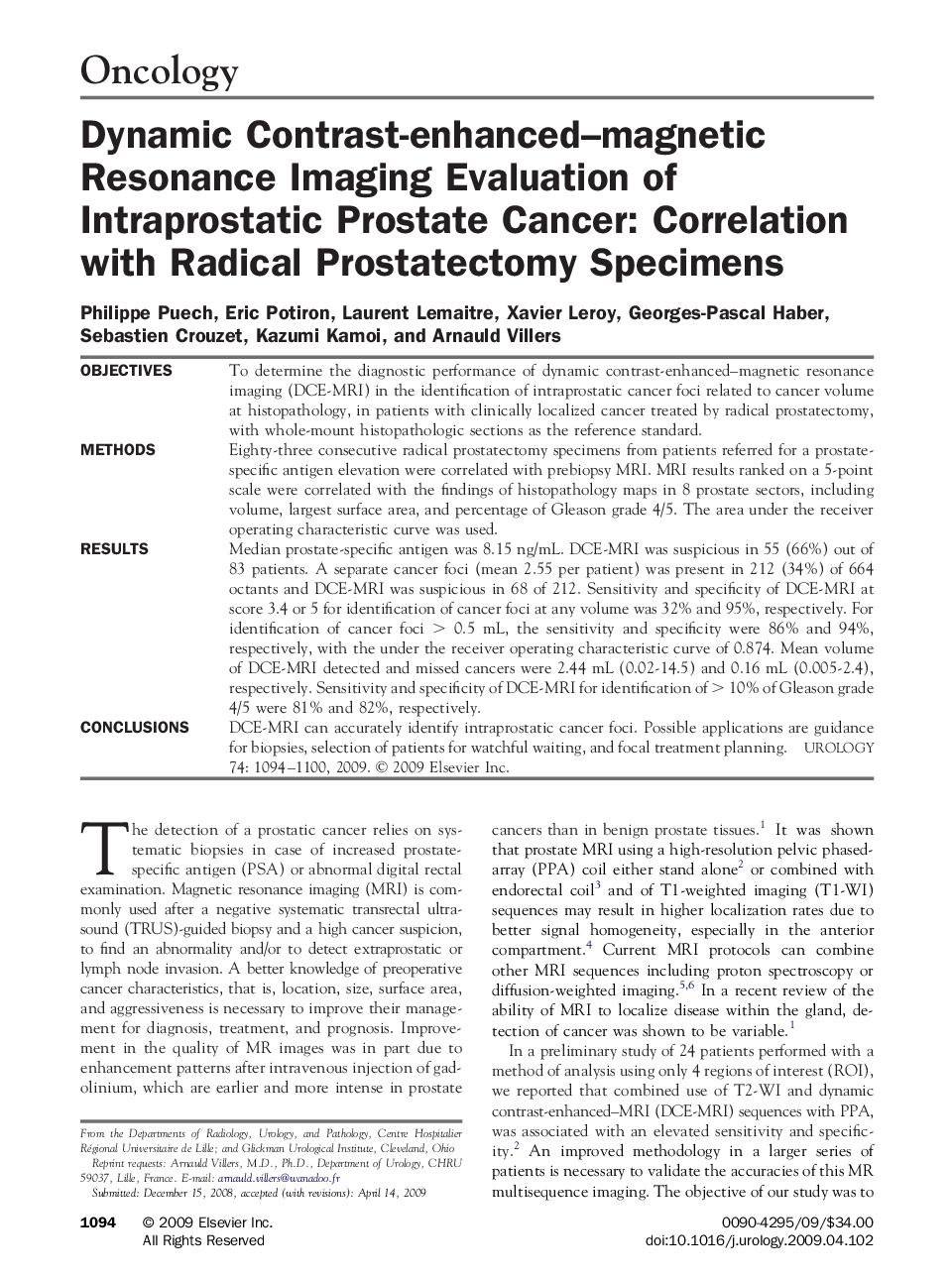| Article ID | Journal | Published Year | Pages | File Type |
|---|---|---|---|---|
| 3902378 | Urology | 2009 | 6 Pages |
ObjectivesTo determine the diagnostic performance of dynamic contrast-enhanced–magnetic resonance imaging (DCE-MRI) in the identification of intraprostatic cancer foci related to cancer volume at histopathology, in patients with clinically localized cancer treated by radical prostatectomy, with whole-mount histopathologic sections as the reference standard.MethodsEighty-three consecutive radical prostatectomy specimens from patients referred for a prostate-specific antigen elevation were correlated with prebiopsy MRI. MRI results ranked on a 5-point scale were correlated with the findings of histopathology maps in 8 prostate sectors, including volume, largest surface area, and percentage of Gleason grade 4/5. The area under the receiver operating characteristic curve was used.ResultsMedian prostate-specific antigen was 8.15 ng/mL. DCE-MRI was suspicious in 55 (66%) out of 83 patients. A separate cancer foci (mean 2.55 per patient) was present in 212 (34%) of 664 octants and DCE-MRI was suspicious in 68 of 212. Sensitivity and specificity of DCE-MRI at score 3.4 or 5 for identification of cancer foci at any volume was 32% and 95%, respectively. For identification of cancer foci > 0.5 mL, the sensitivity and specificity were 86% and 94%, respectively, with the under the receiver operating characteristic curve of 0.874. Mean volume of DCE-MRI detected and missed cancers were 2.44 mL (0.02-14.5) and 0.16 mL (0.005-2.4), respectively. Sensitivity and specificity of DCE-MRI for identification of > 10% of Gleason grade 4/5 were 81% and 82%, respectively.ConclusionsDCE-MRI can accurately identify intraprostatic cancer foci. Possible applications are guidance for biopsies, selection of patients for watchful waiting, and focal treatment planning.
